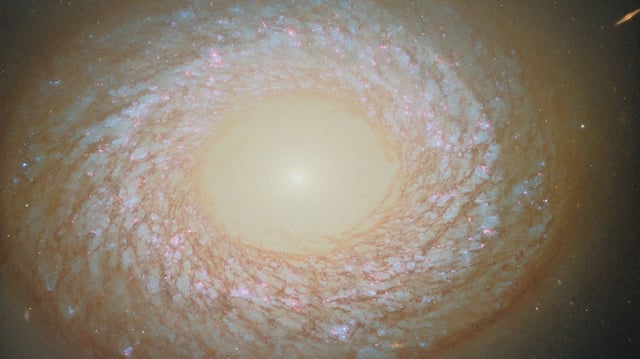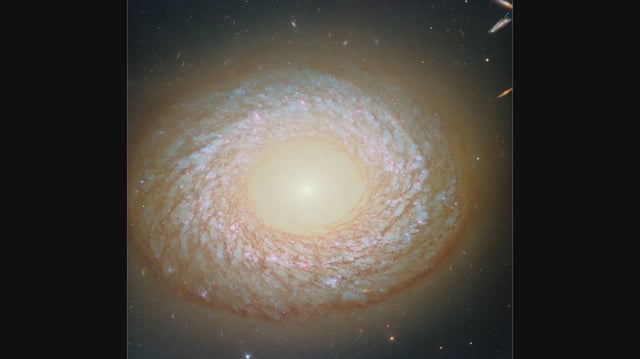Overview
- NASA and ESA released an updated Hubble Picture of the Week that adds H-alpha data tracing ionized hydrogen around massive young stars.
- The view shows a smooth, gas-poor central region resembling an elliptical galaxy contrasted with a dusty, feathery outer disk rich in patchy star clusters.
- NASA says most astronomers currently favor calling the object a flocculent spiral, though its classification remains tentative due to a single viewing angle.
- Independent observations identify a faint hydrogen tail roughly 100,000 light-years long, pointing to past interactions or minor mergers not visible in the Hubble frame.
- Located about 67 million light-years away in the constellation Cancer, NGC 2775 is part of the PHANGS-HST effort to map star formation in nearby galaxies.

